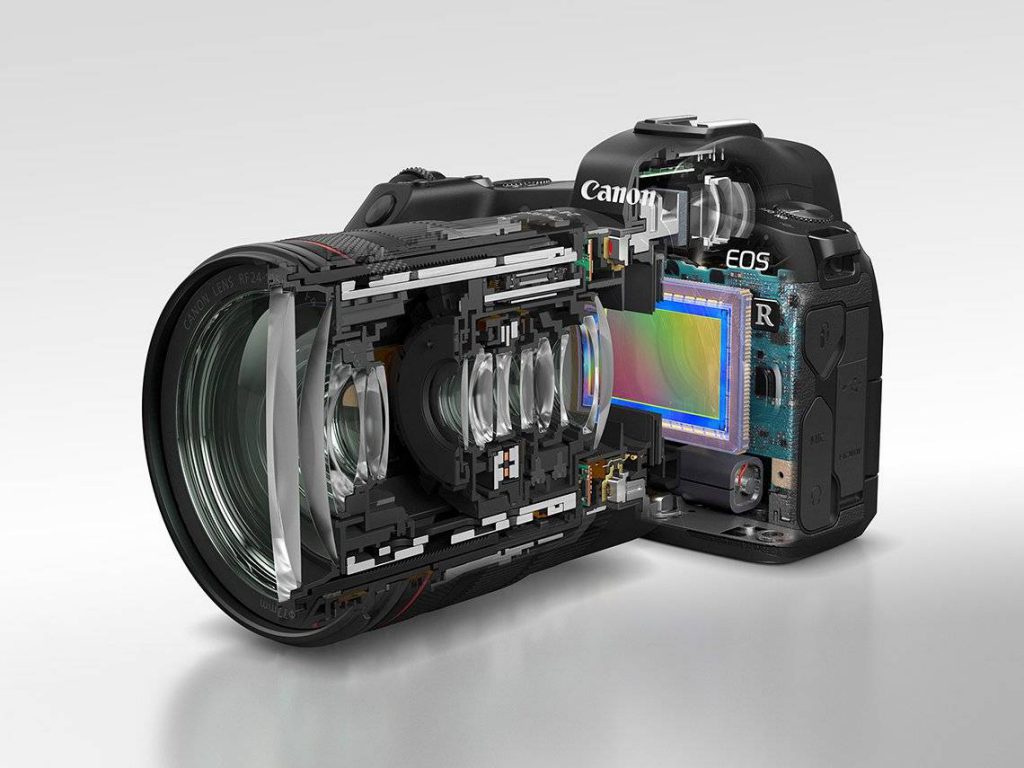Difference between DSLR and Mirrorless DSLM Cameras
Difference between DSLR and Mirrorless DSLM Cameras
DSLR vs. Mirrorless Cameras (DSLM)
How does a DSLR camera work?
The SLR design was invented long before digital sensors, when the only way to show the view through the camera lens was to use a mirror in the body to reflect and image of the scene up into the viewfinder, also direct light on to the dedicated Auto Focus sensor, as well as the Auto Exposure sensor. When you take a picture, the mirror flips up so that the image can then pass to the back of the camera where the film is exposed. The only difference between this old SLR (single lens reflex) design and today’s DSLRs is that the film has been replaced by a digital sensor.
How does a DSLM mirrorless camera work?
In a mirrorless camera, these components are removed, along with the mirror-box. By removing the mirrors, the camera becomes smaller and lighter however this does present a challenge, because a substitute for the Auto Focus and Auto Exposure sensors needs to be found. Mirrorless cameras give that job to the imaging sensor, meaning that it has to do multiple jobs.
Optical Viewfinder on a DSLR Camera
How Optical Viewfinders (OVF) work:
An OVF uses a mirror and a prism to bounce light through the lens and towards your eye. This means you can see what’s in front of your camera exactly as you’d see it if you were looking directly at it, with none of the slight time lag that you sometimes find with electronic viewfinders (see below). Meaning even with your camera turned off, you can look through the viewfinder and frame a shot visually.
What they won’t necessarily show you is what the final image will look like, for example if you’re using the camera’s auto settings and it makes adjustments to take account of low light levels.
What is live view on a DSLR with OVF?
In basic terms, live view takes what your camera sees straight from its imaging sensor and displaying it on the LCD screen. On a DSLR, this means locking the mirror up and the shutter open so that the sensor is always exposed to light, bypassing the optical viewfinder entirely.
In addition to slower autofocus, live view mode on DSLRs tends to have longer shutter blackout times and slower burst rates. Those who need to move at a fast pace — photojournalists and street photographers, for example — won’t be able to work as effectively if shooting in live view.
The other major drawback is significantly reduced battery life. An optical viewfinder uses almost no energy at all, and DSLRs can often take thousands of photos on a single battery charge. In live view, however, you may only get a few hundred, as continuously powering the sensor and screen takes a lot of juice. Same accounts for DSLM mirrorless cameras.

Electronic Viewfinder on a DSLM Camera
How Electronic Viewfinders work:
An EVF is essentially a tiny screen; it replicates what you’d see on the main monitor. Rather than viewing the scene through a series of mirrors, you see a digital capture of the world through your camera’s sensor. This means that what you see is very close to what the camera will ultimately capture, which takes account of manual or automatic setting adjustments. In a Mirrorless camera, you look at what the imaging sensor is seeing, regardless of whether you are viewing it through the LCD screen, or an electronic viewfinder.
Pros of Electronic Viewfinders
An EVF can display a larger amount of information in your eye line, such as a histogram (which helps you to adjust exposure and so forth), so advanced photographers can achieve the best possible shot.
Cons of Electronic Viewfinders
Cheaper EVFs can struggle to focus on fast-moving objects. This issue is less prevalent in more expensive digital cameras. The refresh rate of the viewfinder can also have an impact, as more time is required for the sensor to collect enough light to show an accurate image. This might result in a slight time lag between pointing the camera at your subject and seeing the image on screen. This is most noticeable in low-light environments. Lower-quality EVFs have lower resolutions and provide you with a preview that’s blurry or grainy.

The Verdict – Mirrorless Cameras are the future
Mirrorless cameras have the advantage of usually being lighter, more compact, faster and better for video; but that comes at the cost of access to fewer lenses and accessories. For DSLRs, advantages include a wider selection of lenses, generally better optical viewfinders and much better battery life. Currently lenses for mirror lens cameras are still more expensive than their DSLR counterpart, but of a superior optical quality.
For beginners, mirrorless cameras are often a better choice due to their more compact size and simpler controls. Mirrorless cameras are also more likely than a similarly priced DSLR to have a touchscreen and thus are more like using a smartphone camera.
4 Comments
Change privacy settings | Privacy settings history | Revoke consents
Copyright © Chris Wild Photography 2024 All rights reserved.



I need to to thank you for this great read!! I certainly loved every bit of it. I have got you book-marked to look at new things you postÖ
Im very pleased to find this great site. I need to to thank you for ones time for this wonderful read!! I definitely enjoyed every little bit of it and I have you book-marked to check out new stuff in your website.
Greetings! Very helpful advice within this article! It is the little changes that will make the most significant changes. Thanks a lot for sharing!
I like reading a post that can make people think. Also, thanks for allowing for me to comment!